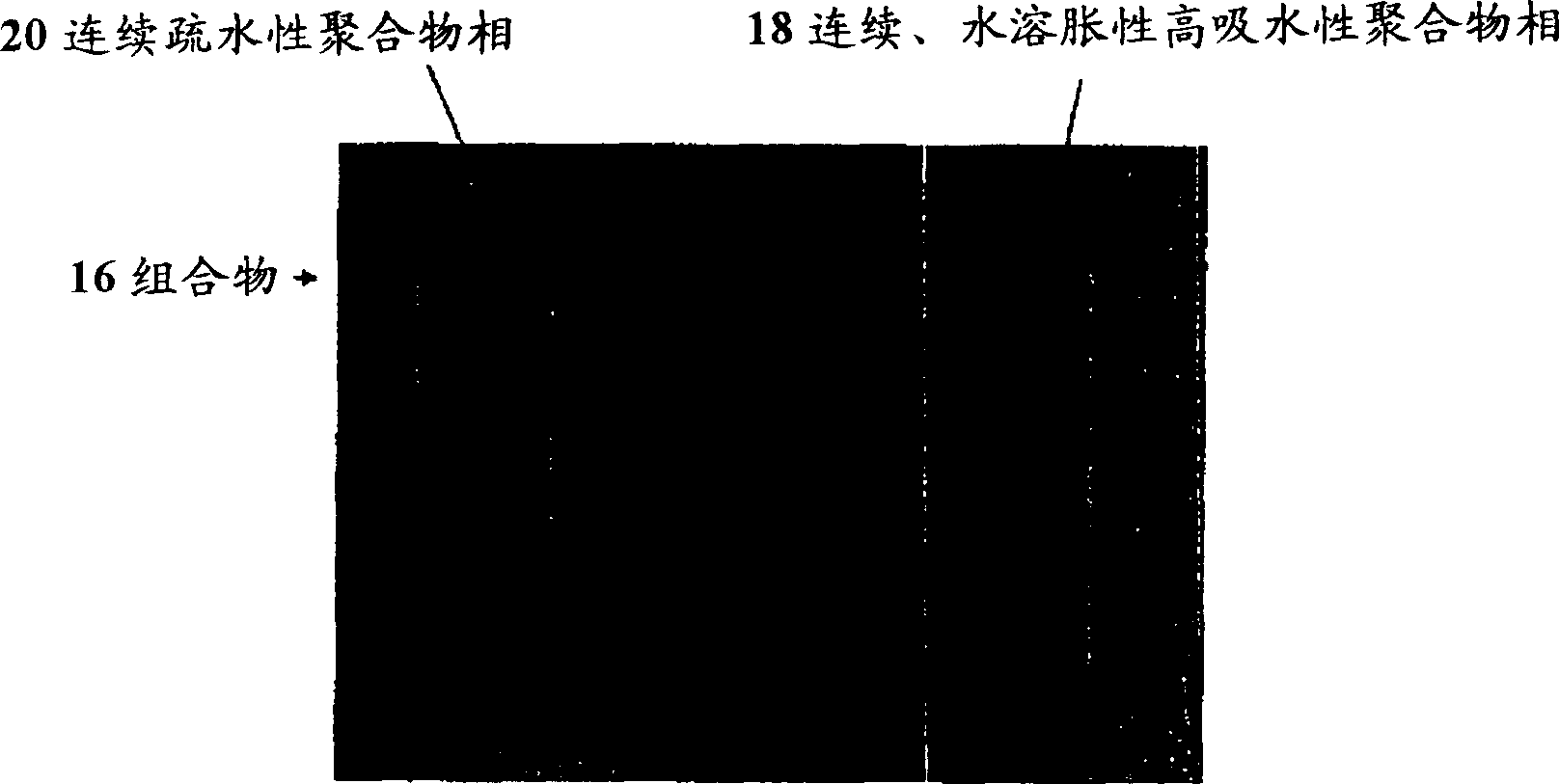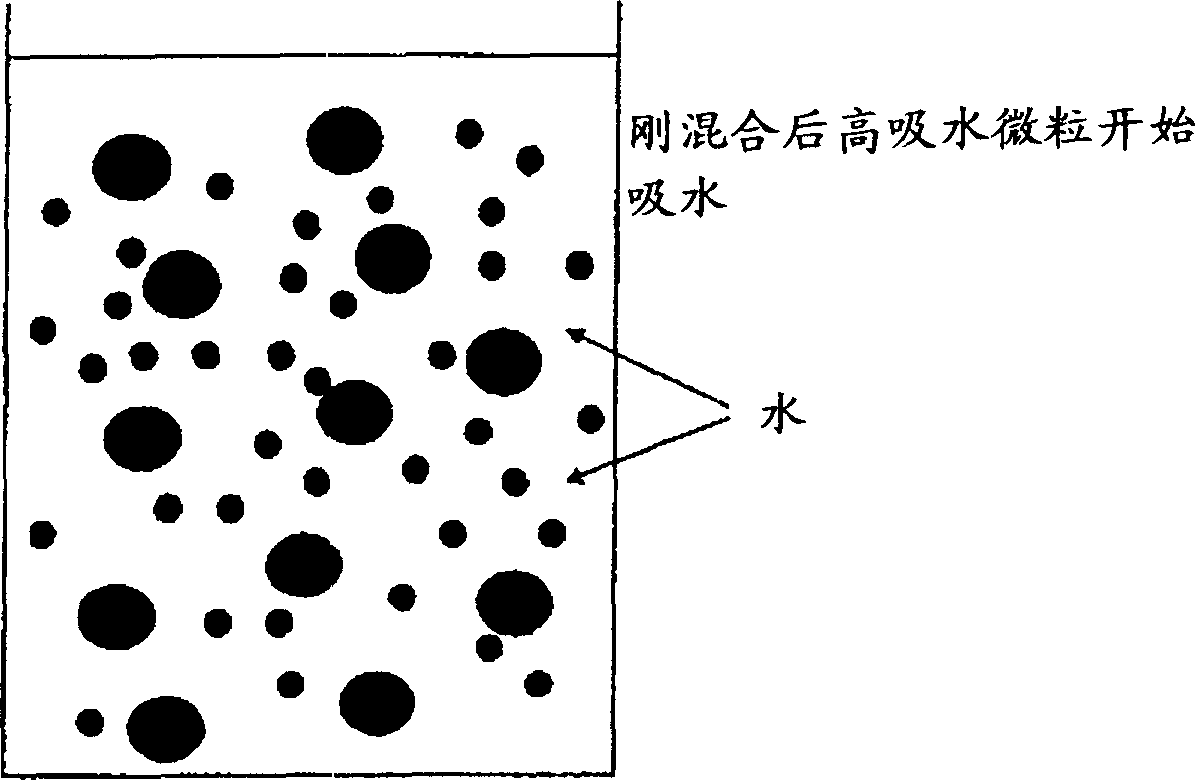Superabsorbent-hydrophobic polymer two-phase compositions
A hydrophobic polymer, high water absorption technology, applied in the direction of graft polymer adhesives, adhesive types, other chemical processes, etc., can solve problems such as damage to material properties, reduce waste, safe preparation, simplify The effect of the preparation method
- Summary
- Abstract
- Description
- Claims
- Application Information
AI Technical Summary
Problems solved by technology
Method used
Image
Examples
Embodiment 1
[0105] It can be seen from the above table that the ingredients in component A are oil, superabsorbent resin, and crosslinking agent; component B contains hydrophobic polymer emulsion.
[0106] Component A was prepared using a Silverson high speed rotor-stator type mixer. All ingredients, except the superabsorbent, were filled into a container and stirred at 4000 rpm for 15 minutes. The superabsorbent material was added to the mixture of oil and crosslinker using a single shaft, paddle type (about 200 rpm), vacuum mixer. This mixing step was performed under vacuum for one minute. Immediately add Component B to Component A and mix the composition in a vacuum mixer. Viscosity increases significantly within one minute. At this point the composition is rubbery. The samples were pressed into 60 mil sheets. The composition was then crosslinked for one week at room temperature. Tensile strength and elongation were measured at a crosshead speed of 20" / min. The results are...
Embodiment 2
[0112] The tensile strength and elongation test results of the compositions prepared by mixing the two components are as follows.
[0113] Tensile Strength Elongation
[0114] (psi) (%)
[0115] 563.1 264.9
Embodiment 3
[0118] Component A is a superabsorbent polymer dispersed in water. The other component is an aqueous emulsion of butyl acrylate styrene copolymer, which is pressure sensitive.
[0119] Component A was prepared using a high speed Cowels dissolver. A few minutes of mixing is required to obtain a thick, pasty mass. Charge Part A and Part B into a vacuum mixer and mix for 2 minutes. Here the viscosity increases significantly and the mixture has a spreadable, pasty consistency. A 60 mil sheet was pressed between two PET release liners. After standing for a day, the material transformed into a rubbery consistency. Tensile strength was measured after one week. The result is shown below.
[0120] Tensile Strength Elongation
[0121] (psi) (%)
[0122] 5.3 155.2
[0123] These results demonstrate that the compositions of the present invention can be prepared without oil.
PUM
| Property | Measurement | Unit |
|---|---|---|
| phase transition temperature | aaaaa | aaaaa |
Abstract
Description
Claims
Application Information
 Login to View More
Login to View More - R&D
- Intellectual Property
- Life Sciences
- Materials
- Tech Scout
- Unparalleled Data Quality
- Higher Quality Content
- 60% Fewer Hallucinations
Browse by: Latest US Patents, China's latest patents, Technical Efficacy Thesaurus, Application Domain, Technology Topic, Popular Technical Reports.
© 2025 PatSnap. All rights reserved.Legal|Privacy policy|Modern Slavery Act Transparency Statement|Sitemap|About US| Contact US: help@patsnap.com



